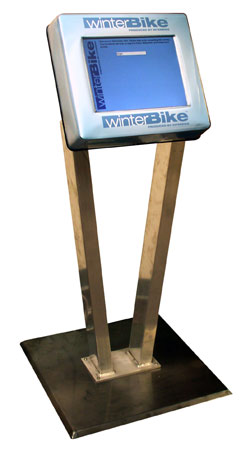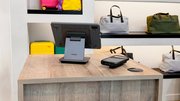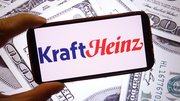Article
Automating the survey process
Intelligent businesses rely on customer feedback to drive decision-making. Paper ballots and face-to-face polls remain useful, but survey kiosks are becoming increasingly powerful in extracting useful customer information, and getting it in the right hands.
July 14, 2005 by James Bickers — Editor, Networld Alliance
Any sensible business thrives on customer feedback. For years, Tuscon's International Wildlife Museum relied on an old-fashioned system - paper opinion cards stacked by the exit.
"I didn't get much information from them," said Cindy Fields, sales and marketing manager for the museum. "We would pose a question like `How did you enjoy your visit to the museum,' and people would say `It was great.' And I'd compile them for a month and I'd get 15 `It was great's."
 This story and all the great free content on KioskMarketplace is supported by: Your reliable one-stop shop for standard or custom touch-input components and turn-key information kiosk systems.  |
In early 2005, the Museum installed a touchscreen kiosk with the help of Diatouch Inc. that asks more than just "How did you enjoy your visit." According to Fields, she is able to build a simple-yet-robust survey that touches on many aspects of the visitor experience.
"By installing a survey where I control the questions, as well as the flow of those questions, I grab specific information that I want to know," she said. "I'm asking specific questions about specific exhibits."
Fields said that in the past, she compiled information from the handwritten cards manually, and then photocopied that information to hand out to management. Now, detailed reports print out with just a few clicks of a mouse.
Gathering real, useful data
According to Elisabeth Scherer, spokesperson for Diatouch, survey data can do more than just gauge customer satisfaction - it can open a retailer's eyes to some serious missed opportunities. For instance, she points out that a certain basketball team never marketed products to women in its gift shop. That shop, which fared poorly, was on the verge of closing.
"At about this time the club conducted a survey among their fans," she said. "Among many other things, it discovered that nearly 50 percent of the audience were women. A clever manager started to introduce items to the gift shop that were made for women and the gift shop started to thrive. Just one survey made all the difference."
|
According to Troy Janisch, president of Icon Interactive, customers that already have brand loyalty are ideal targets for survey kiosks.
"They provide the baseline you need to measure a company's quality of service," he said. "Regular customers are always going to notice changes in quality first. And since regulars may have personal relationships with some employees, they sometimes view talking to the manager as `going over someone's head' and may let things slide."
Drawing people in
A big challenge for anyone wanting to implement a survey - touchscreen or not - is how to get people to stand still for it. We've all been approached by clipboard-bearing opinion pollsters in a shopping mall, and we've all come up with creative reasons why we simply don't have the time to "answer just a few, short questions." People generally don't want to be bothered when they're enjoying themselves.
 |
A survey kiosk recently deployed by Icon Interactive |
So, conventional wisdom says that you need to give people something in exchange for the data they will be giving up. And sometimes this works, sometimes it doesn't.
"The challenge of getting people to use kiosks is often very different in every installation," said Lynda Partner, vice president of marketing for In-Touch Survey Systems. "In pure lead generation, offering a prize that is delivered to the user after doing the survey will encourage survey completion and accurate data - they'll give their correct contact info if they see that it's needed to receive the prize."
But Larry Mahar, executive vice president for Cypress, Calif.-based TouchVision Corp., has had a different experience.
"We have been very pleasantly surprised and have found that if the user is truly interested in the topic, they will take the time," he said. He points to a recent TouchVision installation of survey kiosks for Texas county health departments. "We receive anywhere from 10 to 50 responses a day from interested users with no incentive at all other than just wanting to give their feedback."
Janisch added that additional data can be collected by incorporating small survey elements in existing transactional kiosks. "This is a customer who used your service one time and has nothing to lose by providing quick and honest feedback," he said. "Transactional customers are great at identifying the expectations of prospective customers - which is something regular customers may not be able to do as well."
Keep it simple
|
As with so many things, there appears to be an inverse relationship between a survey's sophistication and its success rate. The temptation to pile in question upon question is great - after all, you want to get the maximum amount of data from your investment. But making a survey too involved or too lengthy will almost certainly decrease how much people are willing to use it.
"Unless you know for sure that your offer is of great value, shorter is better than longer," Partner said. "Anything longer than 20 questions, three minutes, has an almost magical impact, and will reduce the response rate."
Partner also recommends spreading questions across multiple screens whenever possible, using skip patterns and branching to make the survey more relevant for each user, auto-advancing when possible and showing a progress bar so that the user can gauge how much longer they can expect to spend.
Scherer's suggested best practices include offering the use of multimedia to keep things interesting, incorporating scanners and swipe readers to facilitate better data collection, and "piping," which replaces certain words on screen with customized data about the user (for instance, ask the user for his name at the start of the survey, then address him by name throughout).
"All industries benefit from the self-service concept of survey kiosks and the paperless data collection process," she said. "Workload and cost are significantly lower than with other methodologies."












